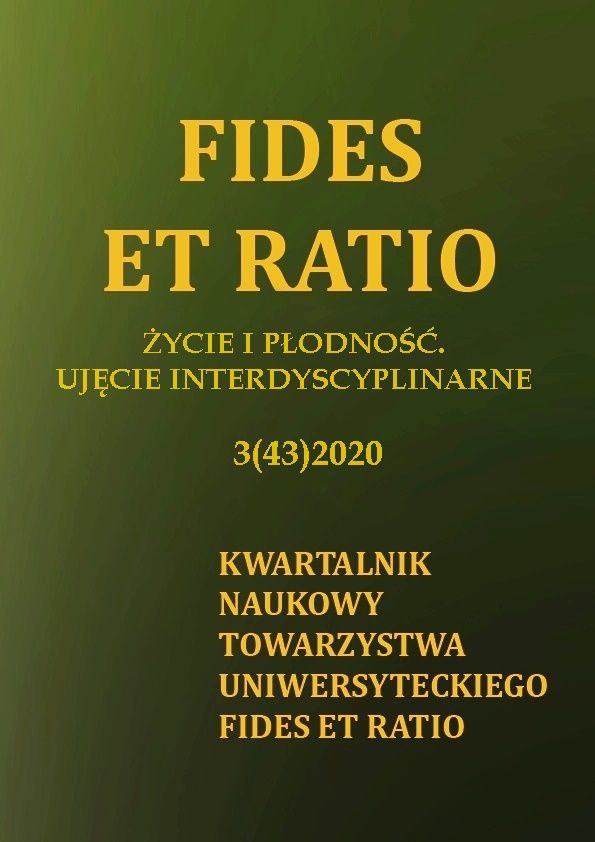Abstract
In about 35% of couples suffering with infertility the cause of problems with getting pregnant is the male factor (Agarwal, Mulgund, Hamada, Chyatte, 2015). The male semen may have incorrect parameters for various reasons. A frequent cause is urogenital infection. Unfortunately symptoms are often minimal or nonexistent and men do not go to the doctor. These infections may result in decreased production of sperm, reduced mobility or changes in sperm morphology (oligo-asteno-teratozoospermia syndrom). Episodes of acute or chronic orchitis or epididymitis may result in permanent damage to the testis or to obstruction in the efferent ejaculatory ducts. Azoospermia (i.e. lack of spermatozoa in ejaculate) on semen analysis can be a consequence of infection-induced obstruction. The content of the ejaculate is then the seminal fluid itself, which is produced in the prostate (not in the testes). Single sperm in semen may be present (cryptozoospermia). Urinary tract infections in men can cause inflammation in their partners. This can be chronic inflammation of the cervix and endometrium, alterations in reproductive tract secretions, induction of immune mediators that interfere with gamete or embryo physiology, and structural disorders such as intrauterine synechiae, changes of the oviduct or surrounding peritoneum. On the other hand genital tract infections are a major cause of antisperm antibody formation in men. Genital tract infections and antisperm antibody formation in men can lead to immune-mediated infertility in women. Infection is also a main cause of infertility (Weidner, Pilatz, Diemer, Schuppe, Rusz, Wagenlehner, 2013; WHO, 1987). In any case of infertility, infections should be considered. It is important to identify infectious factor beacause only then is it possible to treat causal.
References
Agarwal, A., Mulgund, A., Hamada, A., Chyatte, M.R. (2015). A unique view on male infertility around the globe, Reproductive Biology and Endocrinology, 13, 37. https://doi.org/10.1186/s12958-015-0032-1
Agarwal, A., Parekh, N., Selvam, N. et al. (2019). Male Oxidative Stress Infertility (MOSI): Proposed Terminology and Clinical Practice Guidelines for Management of Idiopathic Male Infertility, World Journal of Men's Health, 37 (3), 296–312. https://doi.org/10.5534/wjmh.190055.
Bezold, G., Politch, J.A., Kiviat, N.B., et al. (2007). Prevalence of sexually transmissible pathogens in semen from asymptomatic male infertility patients with and without leukocytospermia, Fertility and Sterility, 87, 1087–97. https://doi.org/10.1016/j.fertnstert.2006.08.109.
Centers for Disease Control and Prevention: Sexually transmitted diseases treatment guidelines (2015). MMWR Recomm Rep, 64 (RR-03), 1–137.
Domes, T., Lo K.C., Grober, E.D., Mullen, J.B., Mazzulli, T., Jarvi, K. (2012).The incidence and effect of bacteriospermia and elevated seminal leukocytes on semen parameters, Fertility and Sterility, 97, 1050–5. https://doi.org/10.1016/j.fertnstert.2012.01.124.
Fraczek, M., Kurpisz, M. (2015). Mechanisms of the harmful effects of bacterial semen infection on ejaculated human spermatozoa: potential inflammatory markers in semen, Folia Histochemica et Cytobiologica, 53 (3), 201-217. https://doi.org/10.1016/j.fertnstert.2012.01.124.
Frączek, M., Hryhorowicz, M., Gill, K., Zarzycka, M., Gaczarzewicz D., Jedrzejczak P., Bilinska B., Piasecka M., Kurpisz M. (2016). The effect of bacteriospermia and leukocytospermia on conventional and nonconventional semen parameters in healthy young normozoospermic males, Journal of Reproductive Immunology, 17 (118), 18-27. https://doi.org/10.1016/j.jri.2016.08.006.
Hedger, M. (2011). Immunophysiology and pathology of inflammation in the testis and epididymis, Journal of Andrology, 32, 625–640. https://doi.org/10.2164/jandrol.111.012989.
Hochreiter, W.W., Duncan, J.L., Schaeffer, A.J. (2000). Evaluation of the bacterial flora of the prostate using a 16S rRNA gene based polymerase chain reaction, Journal of Urology, 163, 127–30.
Işik, G., Demirezen, Ş., Dönmez, H.G., Beksaç, M.S. (2016). Bacterial vaginosis in association with spontaneous abortion and recurrent pregnancy losses, Journal of Cytology, 33 (3), 135-140. https://doi.org/10.4103/0970-9371.188050.
Jungwirth, A., Diemer, T., Dohle, G.R., Giwercman, A., Kopa, Z., Krausz, C., Tournaye, H. (2016). Guidelines on Male Infertility, European Association of Urology.
Pilatz, A., Wagenlehner F., Bschleipfer T., et al. (2013). Acute epididymitis in ultrasound: results of a prospective study with baseline and follow up investigations in 134 patients, European Journal of Radiology, 82, e762–8. https://doi.org/10.1016/j.ejrad.2013.08.050.
Lotti, F., Maggi, M. (2015). Ultrasound of the male genital tract in relation to male reproductive health, Human Reproduction Update, 21, 56–83. https://doi.org/10.1093/humupd/dmu042.
Marconi, M., Keudel, A., Diemer, T., et al. (2012). Combined trifocal- and micro-TESE is the best technique for testicular sperm retrieval in “low chance” non-obstructive azoospermia, European Urology, 62, 713–719.
Moreno, I., Cicinelli, E., Garcia-Grau, I., Gonzalez-Monfort, M., Bau, D., Vilella, F., De Ziegler, D., Resta, L., Valbuena D., Simon C. (2018). The diagnosis of chronic endometritis in infertile asymptomatic women: a comparative study of histology, microbial cultures, hysteroscopy, and molecular microbiology, American Journal of Obstetrics and Gynecology, 218 (6), 602, e1-602, e16. https://doi.org/10.1016/j.ajog.2018.02.012.
Piasecka, M. (red.) (2015). Układ płciowy męski. Badania kliniczne i doświadczalne, Szczecin: Pomorski Uniwersytet Medyczny.
Radko, M., Bogdanowicz, A., Syryło, T. (2018). Bakteriospermia i jej wpływ na parametry nasienia mężczyzn, Postępy Andrologii Online, https://doi.org/10.26404/PAO_2353-8791.2018.08.
Rusz, A., Pilatz, A., Wagenlehner, F., et al. (2012). Influence of urogenital infections and inflammation on semen quality and male fertility, World Journal of Urology, 30, 23–30. https://doi.org/10.1007/s00345-011-0726-8.
Schuyler, J.A., Mordechai, E., Adelson, M.E., Sobel, J.D., Gygax, S.E., Hilbert, D.W. (2016). Identification of intrinsically metronidazole-resistant clades of Gardnerella vaginalis, Diagnostic Microbiology and Infectious Disease, 84 (1), 1-3. https://doi.org/10.1016/j.diagmicrobio.2015.10.006.
Street, E.J., Justice, E.D., Kopa, Z., et al. (2017). The 2016 European guideline on the management of epididymo-orchitis, International Journal of STD & AIDS, 28 (8), 744-749. https://doi.org/10.1177/0956462417699356.
Weidner, W., Pilatz, A., Diemer, T., Schuppe, H.C., Rusz, A., Wagenlehner, F. (2013). Male urogenital infections: impact of infection and inflammation on ejaculate parameters, World Journal of Urology, 31, 717–23. https://doi.org/10.1007/s00345-013-1082-7.
World Health Organization (1987). Towards more objectivity in diagnosis and management of male fertility. Results of a World Health Organization multicenter study, International Journal of Andrology, Suppl 7, 1–53.

